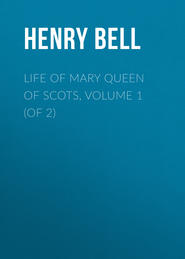По всем вопросам обращайтесь на: info@litportal.ru
(©) 2003-2024.
✖
Life of Mary Queen of Scots, Volume 2 (of 2)
Настройки чтения
Размер шрифта
Высота строк
Поля
112
Buchanan’s History, Book XVIII.
113
Keith, p. 406, et seq.
114
Anderson, vol. i. p. 139.
115
The above account of Bothwell’s adventures and fate, after he left Scotland, is taken principally from Melville, and the History of James VI. But an interesting and original manuscript, entitled a “Declaration of the Earl of Bothwell,” which was made at Copenhagen, in the year 1568, for the satisfaction apparently of the Danish government, has recently been discovered, and an authenticated copy of it having been transmitted to this country in August 1824, a careful translation from the old French in which it is written, was presented to the public in “The New Monthly Magazine,” for June 1825. Satisfied as we are of the authenticity of this “Declaration,” we have availed ourselves of some of the information it supplies, though, of course, great allowance must be made for the colouring Bothwell has artfully given to the transactions he details. We shall have more to say of this “Declaration” afterwards; at present, it is necessary only to refer to it.
116
Keith, p. 411 and 414.
117
Keith, p. 418. It is worth noticing, that no proof of this absurd falsehood is offered – no allusion being even made to the letter which had been shown to Grange, and which, though only the first of a series of forgeries, yet having been hastily prepared to serve the purpose of the hour, seems to have been destroyed immediately.
118
Keith, Ibid.
119
Keith, p. 420.
120
Throckmorton’s Letter in Keith, p. 420, et seq.
121
Melville’s Memoirs, p. 197.
122
Whittaker, vol. i. p. 228.
123
Throckmorton in Keith, p. 422.
124
Robertson, Appendix to vol. i. No. XXI.
125
Robertson, Appendix to vol. i. No. XXII.
126
Throckmorton, in one of his letters, mentions explicitly, that Mary had given him the very reasons stated above for refusing to renounce Bothwell. But as Throckmorton could communicate with Mary only through the channel of the rebel Lords, who, he says, “had sent him word,” it is not at all improbable, that her message may have been a good deal garbled by the way. The passage in Throckmorton’s letter is as follows: – “I have also persuaded her to conform herself to renounce Bothwell for her husband, and to be contented to suffer a divorce to pass betwixt them. She hath sent me word, that she will in no wise consent unto that, but rather die: grounding herself upon this reason, taking herself to be seven weeks gone with child; by renouncing Bothwell, she should acknowledge herself to be with child of a bastard, and to have forfeited her honour, which she will not do to die for it. I have persuaded her to save her own life and her child, to choose the least hard condition.” Robertson – Appendix to vol. i. No. XXII. It was, perhaps, this passage in Throckmorton’s despatch to England, that gave rise to a vulgar rumour, which was of course much improved by the time it reached France. Le Laboureur, an historian of much respectability, actually asserts that the Queen of Scots had a daughter to Bothwell, who was educated as a religieuse in the Convent of Notre Dame at Soissons. Vide Laboureur Addit. aux Mem. de Castelnau, p. 610. Of course, the assertion is altogether unfounded.
127
Some historians have asserted, that Lord Ruthven accompanied the two Commissioners mentioned in the text. But this is not the case, for he was present at a conference with the English ambassador, Throckmorton, on the very day the others were at Lochleven. Throckmorton in Keith, p. 426.
128
Pennant, in his “Tour in Scotland,” thus describes Lochleven, and the island where the Queen resided: – “Lochleven, a magnificent piece of water, very broad but irregularly indented; is about twelve miles in circumference, and its greatest depth about twenty-four fathoms. Some islands are dispersed in this great expanse of water, one of which is large enough to feed several head of cattle; but the most remarkable is that distinguished by the captivity of Mary Stuart, which stands almost in the middle of the lake. The castle still remains, consists of a square tower, a small yard with two round towers, a chapel, and the ruins of a building, where (it is said) the unfortunate Princess was lodged. In the square tower is a DUNGEON, with a vaulted room above, over which had been three other stories.” – Tour in Scotland, vol. i. p. 64.
129
Keith, p. 431.
130
Keith, p. 426. – Whittaker, vol. i. p. 299.
131
Goodall, vol. ii. p. 166, and 344.
132
Leslie, p. 37. – Jebb, vol. ii. p. 221 and 222.
133
Goodall, ibid. – Freebairn, p. 147. – Whittaker, vol. i. p. 301. et seq.– Chalmers, vol. i. p. 248.
134
Keith, p. 436.
135
History of James VI. p. 17. Keith, p. 438.
136
Melville’s Memoirs, p. 193. Keith, p. 442. et seq.






